Independent Collectors
Ingvild Goetz
Margarita Zieda talks to Ingvild Goetz about the talent involved in differentiating a good piece of work from a lucky one hit wonder.
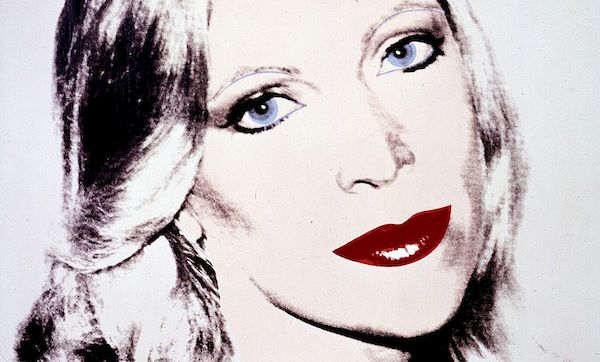
In the autumn of 2013, Ingvild Goetz gifted a notable part of the Goetz Collection – namely, the media art collection, with which only Paris’ Le Centre Pompidou, London’s Tate Modern and New York’s MoMA can compete – to the State of Bavaria. Another gift to the state is the museum in Munich that she built, designed in the 1990s by a pair of architects that were little-known at the time – Jacques Herzog and Pierre de Meuron.
The first exhibition hall that they ever made was this one, specifically for the Goetz Collection; then eight years later, the doors opened on their latest design – London’s Tate Modern. Just like all of the Goetz Collection exhibitions, the Goetz Museum’s huge library of art books is open and free of charge to visitors – all that is required is the making of an appointment beforehand, by telephone, and then showing up at Oberföhringer Straße 103. Munich’s schoolchildren and students study and write their assignments there. Currently, the museum is showing the exhibition “Happy Birthday”, in honor of the twentieth anniversary of the Goetz Collection.
The Wall Street Journal lists the art collection of Ingvild Goetz as one of the ten most important in the world. She is a collector who enters the art market through her own individual pathways, without latching on to the mainstream and the big names of the moment. Containing around five thousand works of art, the substantial Sammlung Goetz (“Goetz Collection”) has developed, in large part, through cooperation with young artists, many of whom were just starting to go down their own paths. Women artists make up nearly half of Goetz’s collection. Goetz likes to put unnoticed artistic positions into the circle of attention. With the capital she has at her disposal. She has the power to restructure the world art map differently – by showing the artists that no one else does.
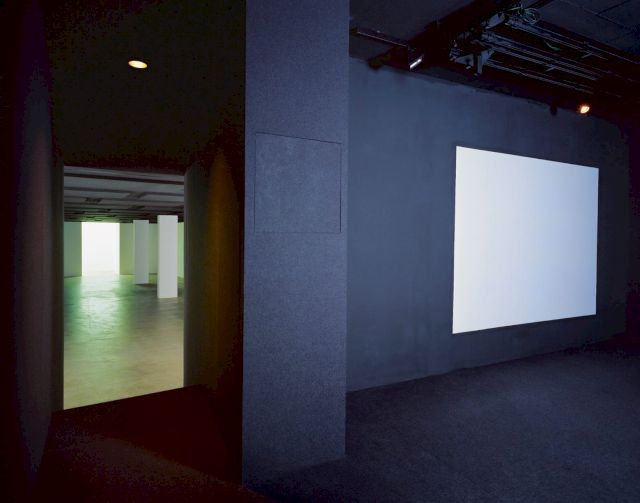
Munich is not, however, where Ingvild Goetz was born; it is where she herself chose to live. Born in the West-Prussian city of Kulma during WWII, Ingvild and her parents and brother were forced to flee as the Russian army advanced. Growing up in Hamburg, she experienced taunting from her classmates due to her Polish accent and her family’s poverty. Today, one of the fields in which Ingvild Goetz directs her philanthropy is financial support for refugees heading to Europe. It is her way of helping those who have come to Europe with nothing, and whom most don’t even want to see here.
Attaining a position as one of the wealthiest men in Germany was aided by the surprisingly successful business idea of Ingvild’s father, Werner Otto: selling shoes by mail-order, which grew into the mail-order catalog empire known as “Otto”, now active in 20 countries. Werner Otto was one of Germany’s most notable benefactors, supporting both medical advancement and the arts, including the creation of various medical institutions and the Konzerthaus Berlin. Along with backing art, Ingvild Goetz also supports bulimia patients and research into treatment of the disease.
I went to see Robert Ryman’s studio. When I met Szeemann again, I told him: “Well, I don't know... There's really nothing I can do with all of this.” … And then he very intensely explained to me how I should look at art. And how it should affect you. How to work with the challenge that perplexes you. How to work with your confusion.
INGILD GOETZ
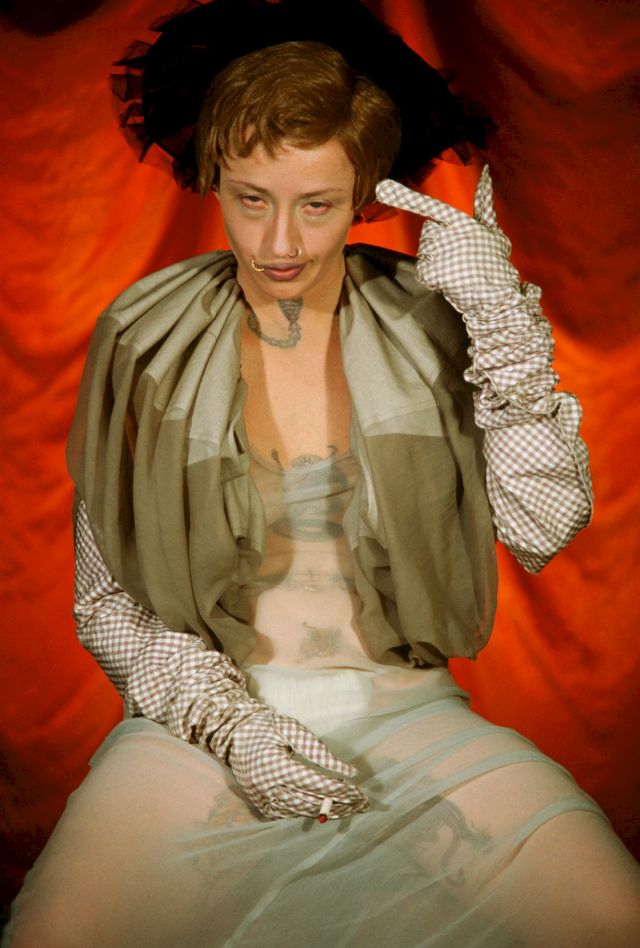
Ingvild Goetz claims that she wanted to be an artist herself, but that her talent lacked scale. In any case, the art that she collects is the kind that she wishes she could have created herself. On the ground floor of her museum is a portrait of Ingvild Goetz herself, created from white letters and numbers, and done by the artist Felix Gonzales Torres. It closes with the words “Hunger of Life”, and the current year. Every year, Goetz writes in the new date, in her own hand. I met with Ingvild Goetz in December, when “Hunger of Life” was still followed with “2013”.
MARGARITA ZIEDA
Instead of art history, you decided to study political science. How does that subject of study influence the vision of a person who is looking at art?
INGVILD GOETZ
I studied political science for a very short time. And I only did it because my boyfriend at the time was studying it. I wanted to study art, but my parents didn’t allow it – they wanted me to gain a respectable profession. And I can honestly say that I studied political science only during the length of the relationship. However, I was a very politically oriented person. I’m a child of the sixties, which was a time when people would go out onto the streets to change something. Five, six hundred university students. Those were huge protests, and both young and old participated. We protested against Springer publishers; we protested against the Vietnam War. Munich’s universities were very conservative at the time, and we went on protests for university reforms. For judicial reforms. We went on protests every other day. And political science was very dull compared to reality, compared to what was going on in the streets. And that’s something that I miss in the youth of today. They don’t go out into the streets anymore, even though there are so many reasons to do so. It used to be that there were always movements against injustice – whether it was injustice in the system, or an unjust war. Everybody went out onto the streets. Those who were for something, as well as those who were against it.
MARGARITA ZIEDA
Your first gallery, art in progress, opened in Zurich in 1972, and with a political stance. But then you immediately lost your work permit. What happened?
INGVILD GOETZ
Artists throughout Europe were politically active at the time. They made “happenings” and performances, the content of which was aimed at making changes in society. So, I decided to open my gallery in Switzerland with the aid of a political “happening”. The war in Angola was going on at the time, and there was a world-wide blockade of supplying arms to the government of this country, which was using them against the unarmed local populace. One Swiss company, however, did continue to supply arms illegally. Wolf Vostell suggested we organize a political “happening” during the opening of the gallery – the creation of a sculpture in Zurich’s central square. I got a permit to create it. We laid out the newspapers that came out on the set day in an area of six square meters, and at a height corresponding to how high the company’s shares had climbed that day. Then the police arrived and asked what was the meaning of all this. We explained and said that it was a political “happening”, to which they replied: “For the sake of God! Here, in Switzerland, such a political “happening” is not possible.”
Our idea was to let the newspapers stay there for a day, and then take them, by lorry, to St. Moritz, where they would be covered by falling snow – society just observes it all, it doesn’t do anything, and then eventually, it gets covered by snow, and the arms just keep on getting supplied – that was the political concept for this “happening”. But the police didn’t allow it. We had to clean up all of the newspapers. And we took them to Germany, where we laid them out on a piece of land belonging to Ulrike Ottinger’s parents. So, the “happening” was transferred from Zurich to Konstanz, but there, of course, it no longer had its real potency. Back then, cinemas still showed weekly newsreels before the main feature. And there, they had added footage of our “happening” along with reports on the war, and how the arms were being manufactured. And that gave the whole thing another powerful boost in the public eye. I still didn’t have a permanent Swiss work permit at the time, and after this event, it was revoked in full.
I began asking artists a lot of questions. I didn't do that before. I also couldn't really think of anything I should ask, especially if I encountered complex art. I was more apt to think about what would be the most polite and quickest way of getting out of there. But then I began with the associations that would come to mind as I looked at the art. I would state them to the artists, and I would include myself in the discussion.
INGVILD GOETZ
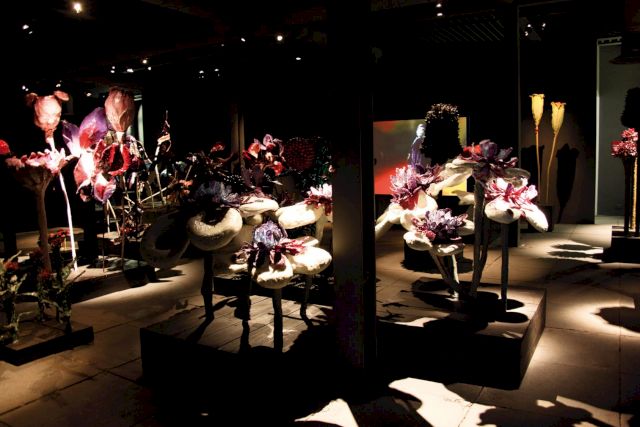
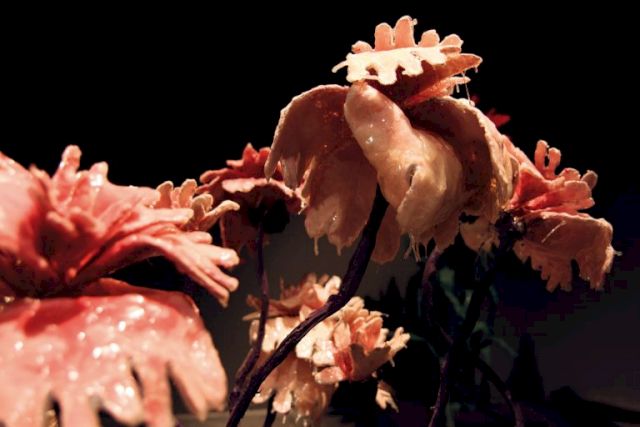
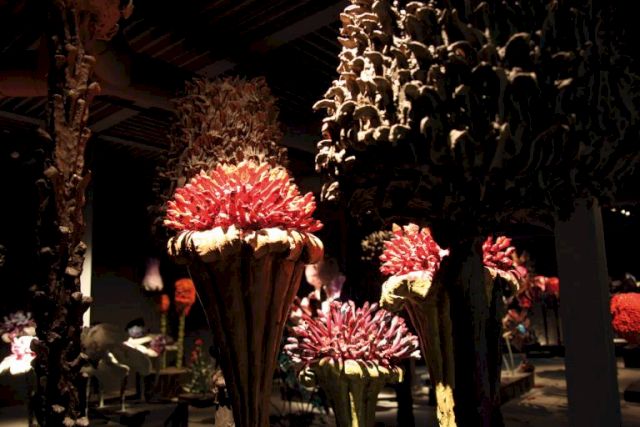
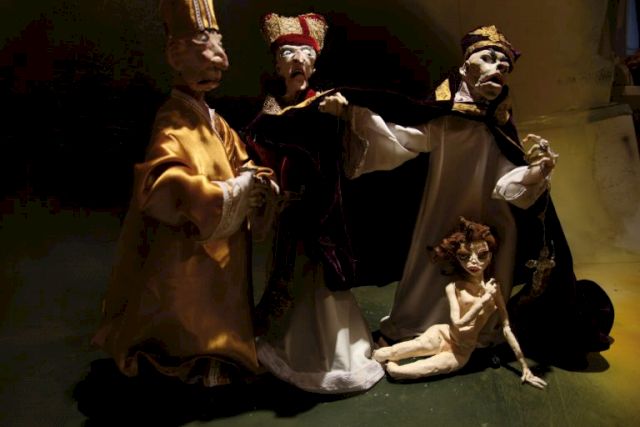
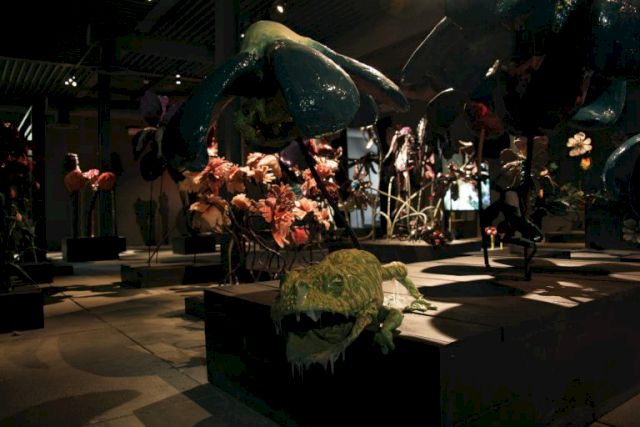

I don't always hit the bulls-eye. I have artists in my collection who don't create anything else after that, or who have failed to advance. Of course, sometimes you do pick the wrong horse. But it's the wrong horse for me. I don't mean that it was a commercial mistake, or that it was exhibited the wrong way, but just that I had felt the art so deeply...
MARGARITA ZIEDA
Yes, but just having a strong will to understand art, especially if it’s something completely new and different, probably isn’t enough to actually understand it. One needs something more.
INGVILD GOETZ
I began asking artists a lot of questions. I didn’t do that before. I also couldn’t really think of anything I should ask, especially if I encountered complex art. I was more apt to think about what would be the most polite and quickest way of getting out of there. But then I began with the associations that would come to mind as I looked at the art. I would state them to the artists, and I would include myself in the discussion. I asked questions, and then I would place my vision and feelings into what I got out of their answers. I really groped around in order to come closer. The artists themselves helped immensely at the time. It is crystal clear that all of this is impossible without any explanation. And, of course, every time I met Harald Szeemann, we talked about art. I spent four weeks in New York, and every day I met with four or five artists. I learned at lot there, back then.
MARGARITA ZIEDA
Yes, now even art critics say that, in many cases, today’s art cannot be understood without an accompanying commentary. And there then arises the question – how should a viewer find the path to art? Your path, it appears then, is done through talking. Do you also use books, articles by art critics?
INGVILD GOETZ
There must be information – either from books, or from the artist himself. But there also must be a free space in which the viewer places himself to have a conversation with the artwork. You confront yourself with that which you are looking at. This personal confrontation is very important. And not just with the artwork, but with yourself as well. I have always been aided by having conversations; it is the best way that I have been able to understand artworks. Less so with books. Often times, I don’t even read what has been said about the artist in question afterwards. Sometimes I’ll read something, but sometimes I don’t even want to know what has been written about him. That’s because there are some critics who see all sorts of things in the artworks, except for what the artist has actually put in there. That’s why for me, meeting personally with the artist is the most important thing.
MARGARITA ZIEDA
Your collection is famous for it having been assembled from young artists who were virtually “no-names” at the time of purchase, but many of whom later became really “big-name” artists. How do you tell good art from bad art?
INGVILD GOETZ
I’ve had almost fifty years of experience at looking at art. And then it happens that the gallery dealer is excited about something, while I remember having had that same feeling thirty years before. Art should, firstly, challenge me. And then – I can’t even explain it – after having “dealt” with the artwork, I decide for myself what I believe to be good or not. This is very hard to explain. I simply can’t explain it. Well, and then I say: “That’s too weak”; or: “The idea is good, but its execution is not”; or even: “The idea hangs front and center; the concept is so yearned for that it doesn’t seem interesting anymore.” But the final decision happens on an emotional level of awareness and receptivity. In any case, it’s first a physical judgment-call and then a thinking one.
MARGARITA ZIEDA
You began collecting art as a child – with postcards of classical oil paintings done by the old masters. But the Goetz Collection has only new art. Why is that?
INGVILD GOETZ
When I was still a child, it seemed to me that old art was the only kind that was interesting. Not modern art. And then, during my school time, I met a teacher who also taught at the art academy. He was convinced that I was talented in terms of things dealing with art, and he was to the one who took me into the world of new art. I went to the academy and looked at the works and the lifestyle of the students, and that was the moment at which art began to terribly fascinate me. In my life, I’ve always been lucky in having met people who have led me off of the wrong paths. When I began to put together a graphic arts publishing house in Konstanz in 1969, the decorative arts were in style in Germany. At the time, I frequently stopped by the new university in Konstanz, where there was this wonderful professor called Smuda. He still writes to me occasionally and asks for catalogs. Every time I came, he would ask me – how can you show such things? How can you do something like that? You will now go to Zurich, and every week you will go see one exhibition. And he got to me so much that – I began to look at the art of the day. That’s how it began. And then I started assembling my little box, filled with artists that interested me. I collected images of all of their works. And that was my path to contemporary art. Yes, in truth, the pathway was through people.
MARGARITA ZIEDA
Your first collections were images from packages of margarine and cigarettes which you would get from people on the street. Those were strangers that you had to approach. Perhaps, in your case, communication comes first?
INGVILD GOETZ
That’s how it was. I’d follow smokers, and when I saw one pull out his pack, I’d ask him if I could rip out the picture. My brother and I spent a lot of time on the streets – exchanging pictures and approaching strangers. I was five or six at the time. My mother would always look for us when we had headed out on our collection runs. Especially me, because I was really crazy about collecting.
There are people who are really very passionate and intense collectors of art, who put themselves into a discussion with the art; and then there are those who say: “It's a matter of prestige. I don't understand art, but if a gallery dealer tells me it's good, then I'll buy it.”
INGVILD GOETZ
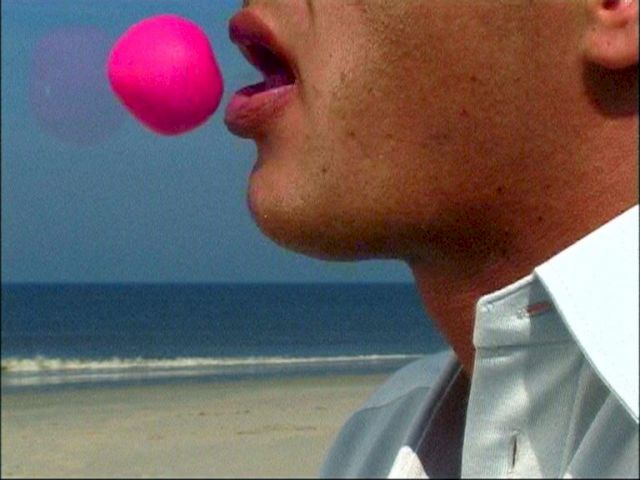
![SARAH MORRIS, Federal Triangle [Capital], 2001. Courtesy Sammlung Goetz](/site/assets/files/26338/2023-07-06_23-06-47_ingvild-goetz_bmw_art_guide_by_independent_collectors.640x0.jpg)

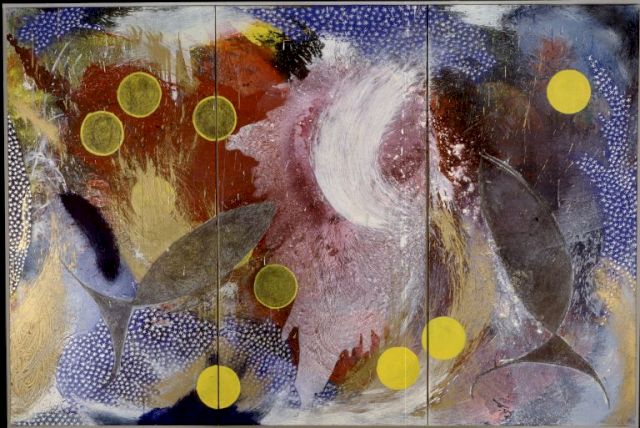
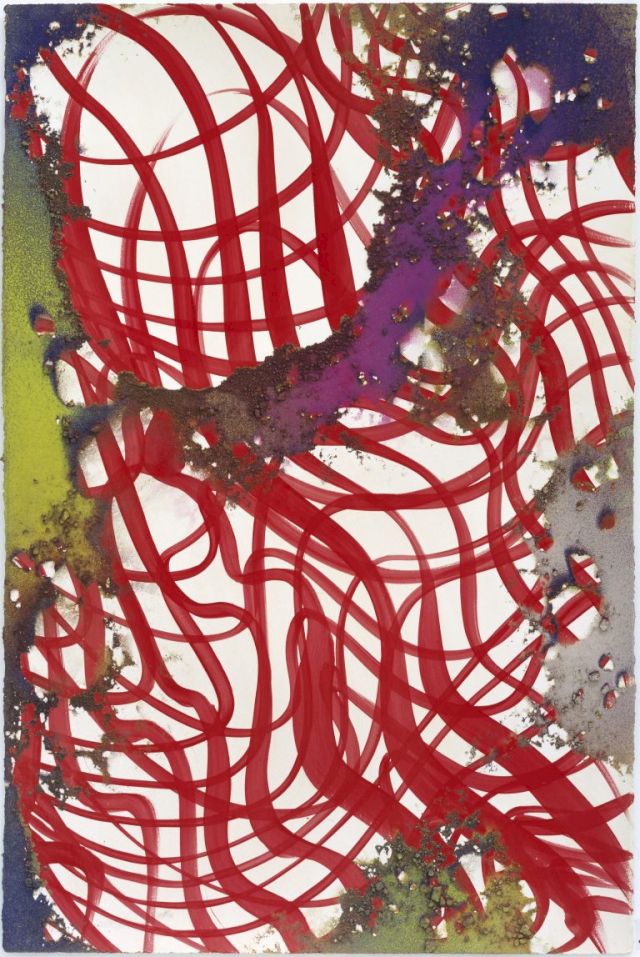
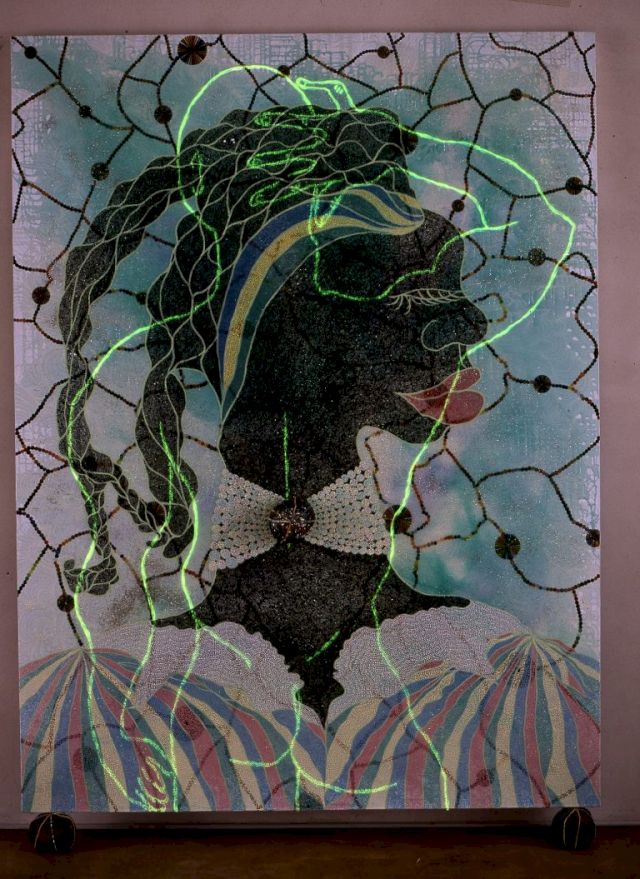
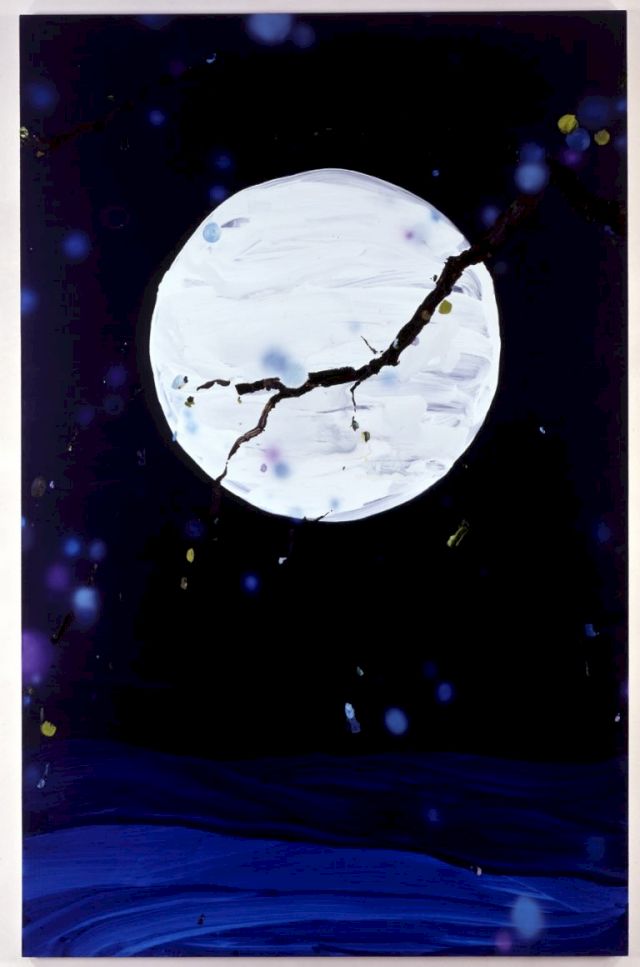
MARGARITA ZIEDA
Back then, you probably mostly spoke about procuring the pictures; later, however, you were speaking to the artists. Is speaking to the artist just as important as the artwork itself?
INGVILD GOETZ
Yes, it is. But for me to even approach the artist, the artwork itself must first speak to me. If I don’t like the piece, I don’t go looking for the artist. The work must speak to me – either in a positive or negative sense – but it must speak.
MARGARITA ZIEDA
How do these conversations with the artists then influence your actions in terms of collecting? When do you say – “no”?
INGVILD GOETZ
I once saw a wonderful series of drawings. It was very special. “Now this is something!” – I said. And so I went to the artist’s studio. At first, he couldn’t say absolutely anything about the series. He was very uncomfortable. And then he said – “Yes, I did it like this. And like that.” And then it came to me – “He has no concept; it was just a random, lucky hit.” I became very unsure of him. And I usually meet with very young artists, so there usually isn’t much to look at yet, that is, in order to gain an understanding. I told myself – “something isn’t right here.” I didn’t buy the works, although I would have otherwise. During our conversation, I was overcome by great doubt that this series was anything more than a lucky one-off. And after a while, this artist no longer came up with anything interesting. I had another instance with a very famous artist who was showing in a big-name gallery. The exhibition seemed interesting to me, and I said that I’d like to meet with the artist. So the artist then showed me what else she would like to make. And it was so pathetic and so awful, and from the way that she was explaining her art, it was clear to me that she was on the pathetic side. Even though her works in the exhibition were really great. It was clear to me that I should keep my distance. I didn’t buy the works. And she was an artist who was already very famous. Later, the gallery dealer confirmed to me that she didn’t last for long. But sometimes things go differently. I am so taken by a piece of art that I buy it. And afterwards, the artist doesn’t create anything interesting anymore. I don’t always hit the bulls-eye. I have artists in my collection who don’t create anything else after that, or who have failed to advance. Of course, sometimes you do pick the wrong horse. But it’s the wrong horse for me. I don’t mean that it was a commercial mistake, or that it was exhibited the wrong way, but just that I had felt the art so deeply…
MARGARITA ZIEDA
But there are artists who may not be able to explain their work well on an intellectual level, but nevertheless, they create powerful artworks.
INGVILD GOETZ
That doesn’t have any meaning whatsoever. But an artist must have a position on their art. And there are those who don’t have a position towards the art that they create. They may have created something good simply by chance. I once spoke to a Spanish artist who had absolutely no position on his art. And I asked him: “But then why do you even do this?” And he replied: “I want to be famous. Tell me – what do I have to do so that my paintings become famous?” And with this, it was over. That is exactly the kind of thing that one senses from having had a talk with an artist.
MARGARITA ZIEDA
How the artists progress long-term is important to you, and you follow them. Do friendships form over time?
INGVILD GOETZ
Yes, with some. I have a very dear friendship with Roni Horn; we are very close. I had the same thing with Felix Gonzales-Torres, who died too young.
MARGARITA ZIEDA
In 1993, New York-based cuban artist Felix Gonzales-Torres flew to Munich to see you, and he created your portrait for the new museum – it is done on glass, and it covers the whole perimeter of the room. It’s the only artwork that is not temporary, and that is always on view. How did the portrait come about?
INGVILD GOETZ
We knew each other very well; we had a close relationship. And Felix said to me – now take a piece of paper and write down all of the most important events of your life. He selected a few of them. He chose events that were important in the world at the time, starting with completely silly things, like the Barbie doll, but right next to it was World War I. To my events, he added ones that he chose himself. It’s a mixture of a portrait of me, and of the world as a whole. And the banal things, like the Barbie doll, make the viewer think – is that her now, or is it Felix? And it really isn’t easy to sift apart which parts are me, and which world events were chosen by Felix. The same goes for the word associations that can be seen in the portrait.
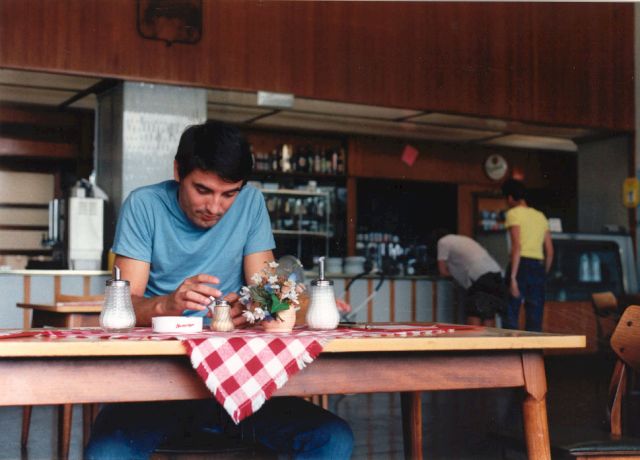
MARGARITA ZIEDA
You won’t now, of course, divide the whole thing into its constituent parts and tell me its secrets. Nevertheless, which of the events are essential to gaining an understanding of you?
INGVILD GOETZ
The well-loved teddy-bear. During the war, we had to quickly leave our home, which was in Poland. My father said – leave everything, we have to flee, the Russians are coming! My brother took his teddy-bear, and I took only a small doll. The fact that I did not take my teddy-bear was something that tormented me throughout the whole refugee process. It was an experience that cut me to the bone.
But in the portrait, there is also the Amazon, in 1959. When I was 15-16 years old, my friend and I went on adventurous trips. To New Guinea; to the furthest corners of the planet. I told my father that we were going to Brazil to see the biggest cities. However, our aim was to go to the jungle. We went to Manaus, in order to go deeper into the jungle. There were seaplanes that transported the locals, as well as adventure-seekers, to the villages. We climbed aboard one of these planes and decided that we would climb out somewhere. But we would fly as far as possible! The plane was full of members of expeditions, and we were these two happy girls. They asked us – where are you getting out? We said – well, somewhere… – What do you mean, “somewhere”? – Well, just tell us where we should get out.
And so we flew. It was beautiful; the plane would land somewhere, locals would get in, and the plane would take off again. And they asked us again – what do you want to see? We said – we want to go to the jungle. And then one of the pilots said: there’s a missionary settlement here, why don’t you get out here? The place was called Obido. A small village. We got out and went up to the missionary settlement. We weren’t dressed like the other people who were going on expeditions; we had on short and breezy summer dresses. And in front of us were these nuns wearing floor-length gowns, and they saw us coming. The whole settlement was full of native children, and the nuns were in horror when they saw us arrive. They locked us up. And then they had to decide what to do with these girls who had come in like sin.
At first, a German nun came, and she hit us on the knees with a cane. We were first punished, and then locked up again. I began to cry. And the little native children were looking into the window and crying with us. They were so loveable! But they wouldn’t let us out. We had to wait until the head nun came. She was Brazilian. A wonderful woman. She apologized to us profusely, and unlocked the door. During this time, we had been given long skirts and we were wearing them over our dresses. And then the head nun had a long discussion with the other nuns. Late that evening, the nuns came and told us that they wished to apologize, because they didn’t know how they should have acted. But they had a gift for us. And they pulled out this small bottle of beer. We asked – where did you get that? They said – we ran up to the holy fathers – our cloister is up there. And they had decided that girls who sinned needed alcohol.
And then we slept in a room together with the native children, and it was so tragic. The nuns had stolen the children from their families. They said – they are pagans, and the children must not grow up to be pagans, too. They had kidnapped them and brought them here to raise them as Christians. Because of the nuns, those children had become orphans. I couldn’t sleep at nights anymore. I thought – where have I come to? What sort of world is this? There were so many little boys and girls who were homesick. The next day, we escaped up to the monks who lived on the hill. The monks were accepting and they took us on. They immediately took us along to work – they worked in the jungle, along with the locals. That’s how we got to the tribes. In the evenings, they’d send us back. And then the mail plane came. It came once a month and flew up into the mountains. Only the pilots went there. They transported food and one priest – to christen the local inhabitants. And we were allowed to fly with them. The people up there hadn’t seen anyone like us; they tried to touch us – they’d secretly touch our hair from behind. Up there, they were still walking around naked; it was the stone age. And with the next mail plane, we came back.
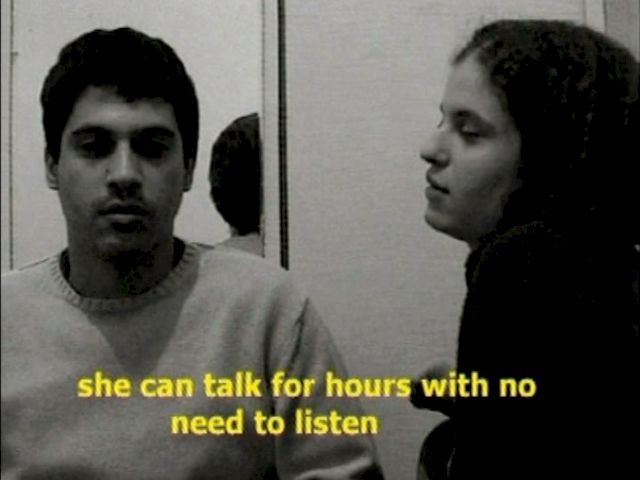
MARGARITA ZIEDA
In listening to this story, I am reminded that a big part of your collection is made up of works by powerful women. But tell me, how has it come about that artworks by women are still seen as subordinate to those done my men? How do you see this?
INGVILD GOETZ
I see it as due to the fact that the majority of gallery dealers are men. And I’d even say that it’s not so much about women’s art as such, as it is about the feminine principle. The principle that would like to study things, the principle that allows for emotion, that heads into psychological territory, where one must simply go in deeper. But there are also male artists that are like that. Mike Kelley, for instance. He himself is masculine, but the feminine elements are very powerful in his art. They speak for themselves and create art that has a link to what he has experienced. Most men aren’t able to allow for this. Everything must be at head level. When I speak to some curator and say: “That is something so great, and it touches the heart”, they are in horror and don’t even want to listen. Everything must stay up – at head level.
MARGARITA ZIEDA
Does that mean that in the male-dictated art world, the first and foremost criterion is the intellectual value of the artwork?
INGVILD GOETZ
That is the masculine principle that shows up in men the most often. But there are also female artists, who have the male principle. It could be in both. For many – be they artists, gallery dealers, or curators – if they are men, diving into emotional territory is a problem. And that’s because they don’t want to get into big discussions about the feminine principle. I was once talking to a French gallery dealer, telling him about the works by women artists that I had just acquired, and he asks me: “How did you ever get the idea to buy the works of women artists? I would never show a female artist in my gallery!” Or Georg Baselitz, who once said in a newspaper interview that there is no point in talking about art by women, because women are not able to create art! I find this statement simply atrocious.
MARGARITA ZIEDA
Your collection proves that you are of a different opinion.
INGVILD GOETZ
Yes! In addition, I’ve never sought out women specifically. I go into an artwork without any knowledge of whether it was made by a man or a woman. It is completely irrelevant to me. I’ve never had the idea: I want to collect art by women. But I am always overcome by fascination when standing in front of art that has been made by a woman. I didn’t even realize that nearly half of the works in my collection are by women. Because I always say that I want only that which is good. But one can see, from my collection, that I see much more good in art that has been done by women. Much more of the unusual and the expressive. That art has much more of a connection to me. I feel it.
MARGARITA ZIEDA
When young British art first came onto the scene, you were the first to notice the works of Sarah Lucas, while most of the hullabaloo was going on around Damien Hirst and his colleagues. And only after a while did others realize that Sarah Lucas is a powerful artist in her own right.
INGVILD GOETZ
I still think she’s wonderful. Yes, I can simply enter female-made art much quicker and get a feel for it. But I don’t have any difficulty with art made by men, either.
MARGARITA ZIEDA
You also don’t let anybody put ideas into your head; either the artwork wins you over, or it doesn’t. You are also assertive of the principle that just because an artwork is highly priced, it does not automatically mean that it is also of high quality.
INGVILD GOETZ
Correct
MARGARITA ZIEDA
How has this fact of life come about – that bad art is expensive?
INGVILD GOETZ
That’s an interesting phenomenon. I was just in New York for a big auction, and the phenomenon was clearly alive and well there. There are people who are really very passionate and intense collectors of art, who put themselves into a discussion with the art; and then there are those who say: “It’s a matter of prestige. I don’t understand art, but if a gallery dealer tells me it’s good, then I’ll buy it.” And then there are those who have, at some point, understood that trading stocks can be problematic, but one can invest well in art.
And there are some young artists who take part in all of this. There’s a definite group of people that observes the artists and decides: “That one, that one, and that one – they will now be the expensive ones.” They make average art, but nothing is easier to manipulate. Three or four people at an auction bid the prices higher and higher, and that’s how it begins. Then you can tell your client: “Look, now this artist’s works will become valuable!” Because the people who have just jumped onto the bandwagon, and who think only in terms of commercial categories, they swarm to the artists who are becoming more expensive. They don’t even look at the works; they don’t even understand if the artworks are good or bad. They just say: “Oh, six months ago his work cost 15 thousand, now it’s worth 100 thousand! It will definitely climb to 150 thousand. Now I, too, will buy his work.” And it all starts living a life of its own, even though the artist is bad. It has nothing to do with quality. They make no difference between god or bad art. Although there are, of course, artists who are of quality. But in this case, art has ended up in the same corner as real estate, jewelry and wine. A place where there are people who have a lot of extra money and who want to invest it in assets. A gallery dealer was telling me how he went to see a collector and asked: “Oh, who is this piece by?” The collector knew only the name of the art dealer from which he had purchased the artwork; he didn’t know the name of the artist. And that’s how this one offshoot develops. It means that the artist is not important, his name is not important, and the owner of the art does not even entertain the idea of dealing with the art on a deeper level. Someone had simply said – “it is expensive”. And that was enough. And if it’s expensive, then that’s good. And I am absolutely convinced that at some point, these prices will fall. Many of these highly-favored artists fall quickly from their pedestals. Artworks are treated as goods. I always feel sorry for those artists who are hoisted up to the very top and then, after two or three years, are thrown into a corner, like old newsprint. I can image the drama these artists go through. Thank god there are always serious collectors.
I always feel sorry for those artists who are hoisted up to the very top and then, after two or three years, are thrown into a corner, like old newsprint. I can image the drama these artists go through. Thank god there are always serious collectors.
INGVILD GOETZ
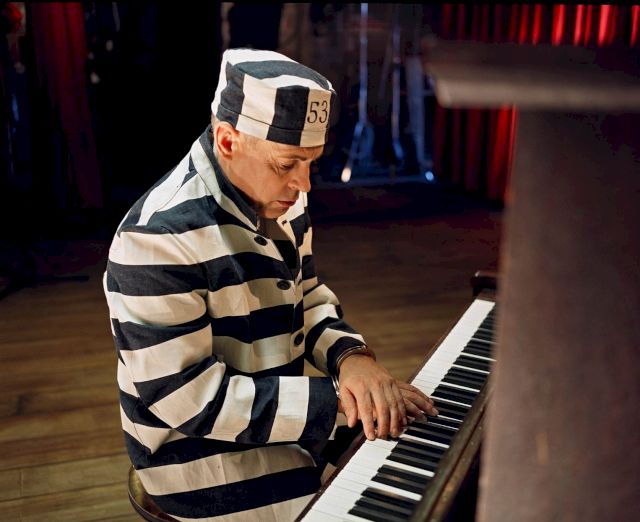
MARGARITA ZIEDA
Why do you collect art?
INGVILD GOETZ
I acquire it because I am fascinated by these artworks. Because they are unique and truly interesting. It enriches me personally. And I don’t care whether or not these artworks will or won’t become more valuable. One thing is important, however – and that is that the artist maintains his quality for a certain amount of time. For the next then or fifteen years, their work must be good. To see an artist’s development, their intentions, that which is important to them – that can’t be seen after two years; it takes time. If, after fifteen years, he isn’t that great anymore, that’s not that important. There are so many wonderful artists, and their work is not expensive. I begin to collect them very early, at the very beginning. I do have artists that have become very expensive, but many works stay at the same price, and regardless, they seem good to me. And then there’s, for instance, Jessica Stockholder, who barely shows anymore, but I am so very sure of her that I buy everything that I can of hers. I have a truly large collection of her works, and in my eyes, she is the same as ever – still very good. But no one else has shown her in the last eight, maybe ten years. But I don’t care. Because I am personally convinced of her worth, and her works still seem excellent to me.
MARGARITA ZIEDA
When you could exclusively give yourself over to collecting art in 1984, the world was still divided by the iron curtain. This is no longer the case; the world has changed. A Berlin gallery dealer told me that eastern European art does not interest him because, at its very base, he notices epigonism. How do you look upon this?
INGVILD GOETZ
That man has simply never seen any art yet. I don’t know what he’s seen; maybe picture books – some sort of epigonism may be visible there. What we discovered for ourselves in Eastern European art was the existence of completely independent positions – of the kind that we had never even had. Works like these could just as well have been created in Western Europe, but they weren’t. There were relatively few who worked in a purely politically way due to political pressure. They had found their own specific style that had nothing to do with political oppression. For example, Pawel Althammer. He is a big artist. (That man from Berlin really hasn’t seen anything.) Althammer is fantastic, and so independent. Also Paulina Olowska, who reworks the Polish culture and history, or the videos by Anna Molska… It would have gone through in Germany or Italy – no, not in Italy, they’re about lightness – but it could have in Germany. It is very European. It isn’t American. The Americans always have difficulties if the art has too much content. My anniversary exhibition consists of the works of Mária Bartuszová and Geta Brǎtescu; they are artists that made fantastical works in the 1960s, but because of the Iron Curtain, no one saw them on this side. And now they have been discovered, just now! And the works are excellent. No one has made works like that here. My collection contains many works from Poland, Romania, the Czech Republic, Albania.
MARGARITA ZIEDA
You said that you never look if the artwork has been made by a man or a woman. When you look at art, do you check the artist’s nationality?
INGVILD GOETZ
No! Not at all. I was recently sitting at a table with people from an American museum, and they were mostly Jewish. They asked me: “Say, do you have any Jewish artists in your collection?” “My God,” I answered, “I haven’t even looked at that!”
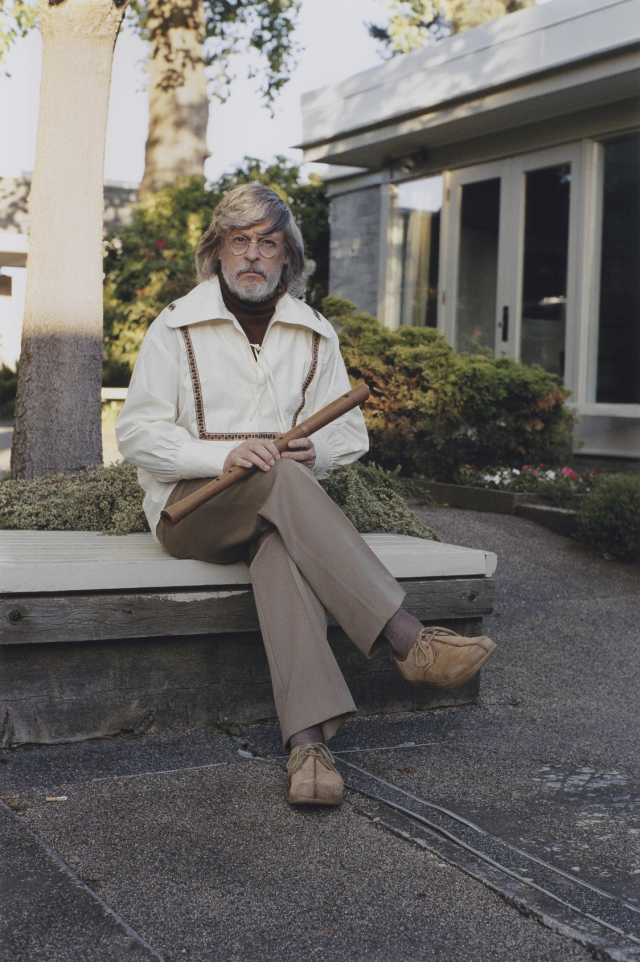
MARGARITA ZIEDA
Before heading to Munich to meet with you, I wanted to read a book that you have recommended everyone should read – “die Shoenheit der Einfachen Dinge” (the beauty of simple things), by Yanagi Soetsu. I went into a Berlin bookstore, but it was sold out. The sales-person looked it up on the internet, and said that there were two used copies available. One was priced at 960 euros, the other – at 1500 euros. “people put their own price on books, and then it goes up. Capitalism in its purest form,” the sales-person commented. What is the most important thing that one can receive from this book?
INGVILD GOETZ
I absolutely refuse to understand this raising of prices. The book is about the Japanese approach to, and view of, things. Objects have meaning. It all begins with the story of a bowl made by very ordinary people, using only one very swift movement. If you saw a photograph of this greatest and most desired bowl, you’d say – it’s something ugly and uninteresting. But experts say that through this bowl, one can feel that with this one swift movement, the maker’s whole soul has been put into it. His whole life. I can’t tell from the picture whether or not I could feel this if the bowl were in my hands. The book is a reflection on these small things that aren’t given a value, but which, nevertheless, have unbelievably great meaning and content. And if a bowl like this breaks, they try to mend it with gold. It is not thrown away. It was a work of art; a person put his soul into it, and it is not thrown into the garbage. It is fixed. And with the most expensive thing that there is – gold. That’s why they say that a work of art forms only when someone has put himself completely into it. One brushstroke must contain everything. And there are only a very few who can put their whole soul into it.
MARGARITA ZIEDA
You are a follower of Buddhism. But then nature should be enough; art is not necessary.
INGVILD GOETZ
Then nothing at all is necessary. If you saw the ten commandments that I’ve picked for myself from Buddhism, then you’d understand that I live among contradictions. My life is one big conflict. Because on one hand, there are the things that I own. But on the other hand, it is so wonderful to see the beauty that comes from owning nothing. When I go off for three months, it is a completely different way of life. Then I don’t need anything. There is just nature. And there is no difference. I feel so good that I ask myself – what is the point of having all that you have? That conflict is there, yes.
MARGARITA ZIEDA
You and your husband, Stephan Goetz, use financial means to help improve the lives of monks in nepalese monasteries, while Andy Warhol’s portrait of you – reminding us of the glamorous side of the art world, one in which you actively participate. How do these contrasting worlds unite in your life?
INGVILD GOETZ
Yes, how do these worlds unite? My life consists of extremes – adventurous traveling also doesn’t go together with silence, meditation, and staying in one place so as to be mindful of it. For three months, I live separated from everything. But I haven’t found a way to combine them. In Munich, I’m feverishly overcome with work, even though I do also meditate here. I’m always thinking about how I could take that world along with me, here. But in truth, they are like two worlds, and when I am in one, I find joy in the fact that I can go to the other. But how to combine them? I have lived for many years, but I still haven’t found a way to do that.
MARGARITA ZIEDA
From this perspective – that life is good without anything at all – why, in your opinion, is art still necessary?
INGVILD GOETZ
Because it stimulates one to start thinking again. If a person wants to accept challenging art – and that doesn’t mean that one must always like it – that person must be extremely open. One must be ready to also accept things and content that might make you uncomfortable, things that you take exception to. But one must be ready to look inside and to deal with it. Art continually trains our tolerance. Nature is what it is. But art challenges.
This interview was originally published in Arterritory.
Order the latest issue of the magazine here.
Related Articles